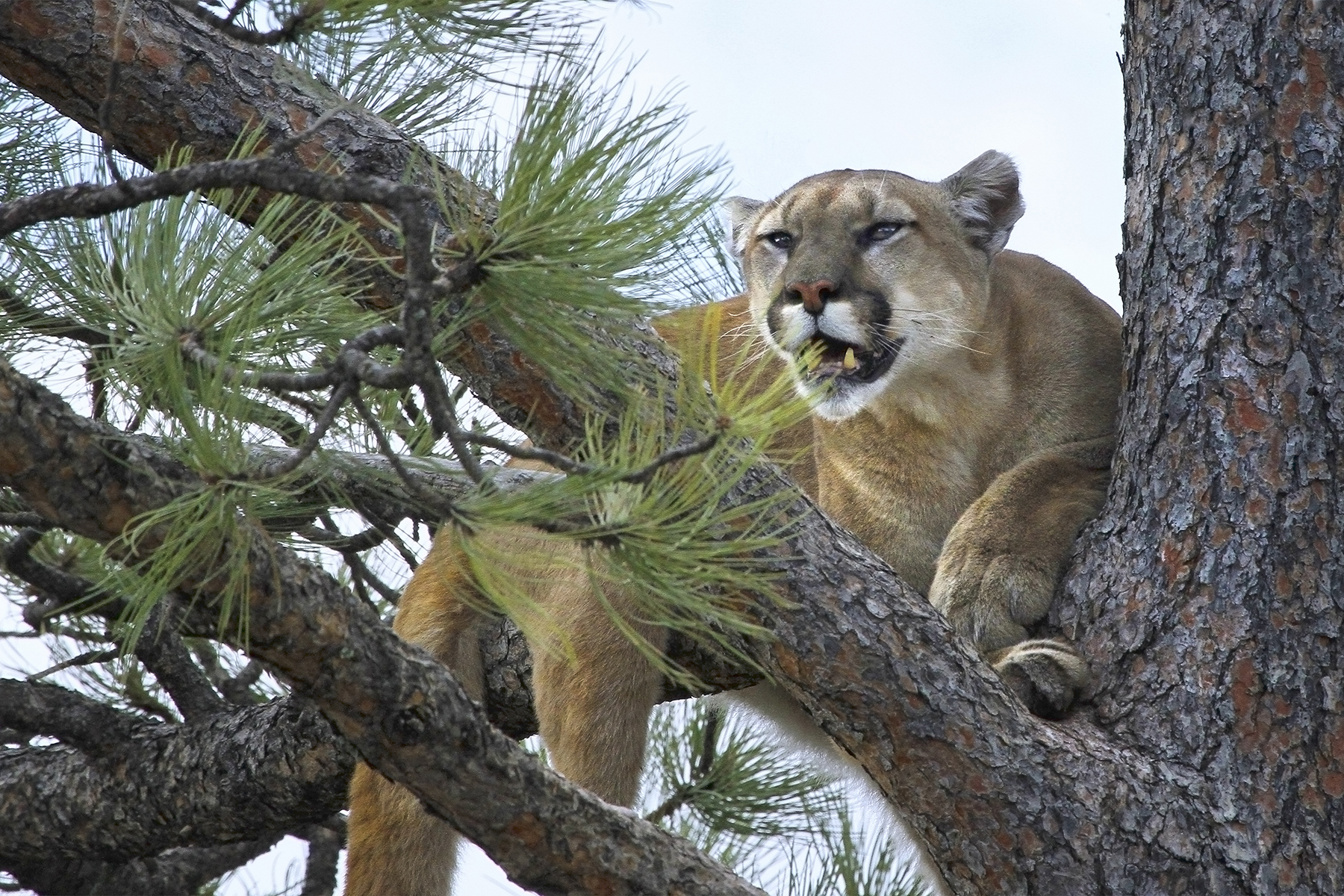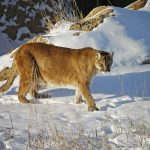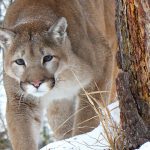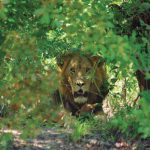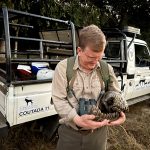UPDATE: Proposition 127 was defeated in November by Colorado voters. Read our analysis here.
Read this before you buy into the claims made by supporters of Colorado’s proposed lion-hunting ban.
Photo above: A mountain lion in Colorado. Photo copyright Victor Schendel: VictorSchendelPhotography.com
Anti-hunting groups have launched a full-on misinformation campaign in their push to ban mountain lion and bobcat hunting in the state of Colorado. A group called Cats Aren’t Trophies has collected enough signatures to place a measure on the statewide ballot this fall, Proposition 127. The initiative’s backers make numerous false claims about scientific wildlife management in Colorado, and specifically about the legal, regulated hunting of mountain lions and bobcats. (The initiative also mentions lynx, even though lynx are classified as endangered and have not been legal to hunt or trap in Colorado for decades.)
Coloradoans for Responsible Wildlife Management (CRWM), a coalition of science-based conservation groups opposing the initiative, noted in a flyer, “This isn’t about fair chase or management concerns; it’s a deliberate attempt to misinform.”
The truth is that Colorado has thriving and well-managed populations of both mountain lions and bobcats. Hunting and trapping may not be everyone’s cup of tea, but these activities are highly regulated, humane, and selective. And many people don’t realize it, but hunters do eat the meat of their mountain lions, and it is delicious.
Let’s take a closer look at some of the questionable claims being made by those who are behind Proposition 127.
Myth: Lions and bobcats are declining
Colorado Parks & Wildlife (CPW), the state agency that oversees wildlife in Colorado, employs a staff of trained biologists to monitor wildlife populations through scientific modeling and field research. CPW’s official statewide estimates of the number of independent male and female lions (not including kittens) is 3,800 to 4,400 statewide.
The agency’s research shows Colorado’s lion population has been growing since 1965, which was the year they were classified as a big-game species. The agency reports: “Both informal and recently collected empirical data suggest Colorado’s lion population is strong and lions are abundant in appropriate habitat.”
Bobcats are also widespread and doing well. Bobcats are the most common wild cat in North America, with some 1.4 to 2.6 million bobcats nationwide. In Colorado, CPW biologists assess five different metrics each year to make sure bobcat populations are healthy. The information indicates Colorado’s bobcat populations are stable and likely increasing in some areas.
Lynx were reintroduced into Colorado in 1999, and although their population is stable, they are currently listed as endangered in Colorado. Lynx are protected by both state and federal law, with hunting and trapping entirely prohibited.
Mark Vieira, CPW’s Carnivore and Furbearer Program Manager, explained that the agency tracks population models for mountain lions in various regions of the state and that biologists have collared hundreds of lions in field studies to verify the population models.
“Observations of mountain lions point to a growing, healthy, and increasingly expanding population,” he said in a recent presentation detailing how Colorado’s professional biologists manage and monitor cat populations. (Watch his full presentation here.)
Myth: Lion and bobcat hunting is a “trophy hunt”
When the authors of proposed Initiative 91 use the term “trophy hunt,” they are implying that hunters are only interested in the head and hide of the mountain lion and not in taking the meat. First off, that’s not what trophy hunting means, but that aside, here are the facts:
Colorado, like other states, has a “wanton waste” law. That means that hunters who take big-game animals like mountain lions are required by law to take and prepare the meat of the animals for human consumption. Bobcats are classified as furbearers rather than big-game animals and as such are exempt from this requirement, but many hunters also prepare and consume bobcat meat.
Americans tend to have a cultural bias against eating cat meat, but there is no health or taste reason for this. As lion hunters have discovered, the meat is, in fact, highly palatable. Outdoor writer and hunter Don Thomas, who guided mountain lion hunts for many years, says, “Lion meat is lean, light, fine-grained, and delicate, and can be prepared in any manner suitable for pork or veal.” He once converted a skeptic by serving him a meal of sweet and sour lion scallopini. The doubter loved it.
Those who aren’t as adventurous with their cuisine often make the meat into sausage. One hunter told me he had his lion meat made into spicy snack sticks, which were a hit with everyone who tried them.
Yes, most hunters also mount their lions or preserve their hides, which is a way of honoring the animal and preserving the experience of the hunt. Before they do, successful hunters are required to present the hides of their lions and bobcats at a CPW office for a mandatory check. The information gathered by the wildlife technicians at these checks is a source of valuable intel for biologists who study these animals.
Myth: Mountain lion hunting is unsporting; it’s like “shooting fish in a barrel”
Mountain lions are secretive and extremely wary animals, and there is nothing easy about hunting them. CPW’s Vieira cited statistics showing that only one in five Colorado mountain lion license holders is successful in harvesting a lion, which hardly sounds like “shooting fish in a barrel.”
Lions can be hunted in several ways, but one of the most common ways is by finding fresh tracks in the snow and then using hounds to trail them until they tree. Like hunting itself, this type of hunt is not everyone’s cup of tea, but it is a method of hunting that has been used for centuries, and it often turns into an extreme physical challenge, since the hunter must follow the cat and hounds on foot (or with skis or snowshoes) over rugged, mountainous, roadless terrain, often for long distances. Nor is a successful chase assured—lions often give hounds the slip.
The main reason for allowing the use of hounds for hunting lions is that it allows hunters to be selective. Colorado’s lion regulations are specifically designed to limit the harvest of adult female lions. “States that don’t allow the use of hounds for lion hunting have a higher harvest of females,” Vieira said.
That’s because it’s easy to quickly tell whether a deer or elk is male or female, but it’s difficult to know the sex of a cat without getting a close look. Hunters can positively verify the sex of a lion in a tree. They can then choose to let the lion go, or make a quick, clean kill.
“I have heard the ‘fish in a barrel’ complaint often, sometimes from other hunters,” Thomas, the former guide, said. “Hard to keep that in mind when I’m making a five-mile hike through treacherous terrain in sub-zero weather! I would guess that we treed fewer than half the cats we chased and shot far fewer than that. Even back when I was in top shape, I’ve never felt as exhausted as I did at the end of some of those hunts, which often did not end with a dead lion.”
Myth: Lion hunting orphans kittens
It’s important to note that female mountain lions with kittens are never allowed to be hunted. Lions are solitary animals, so if you see more than one set of lion tracks together, it’s most likely a female with young. Since lions are almost always hunted in the snow, it’s easy for lion hunters to avoid following multiple sets of cat tracks. Because of this selective method of hunting, female cats with kittens are left alone.
Colorado takes the education and selectivity of lion hunters very seriously, requiring anyone who wants to buy a mountain lion license to take and pass an online test to ensure they understand the rules.
Myth: There is no management reason for hunting cats
Many people wonder why we have to manage wildlife at all—can’t we just let nature take its course? That’s an attractive sentiment, but Colorado now has 5.8 million people within its borders, and humans are heavily encroaching on wildlife habitat—building more and more houses and roads, running four-wheelers and snowmobiles, hiking, skiing, and biking in the backcountry. All of this has a huge impact on wildlife populations, altering the carrying capacity of the land. Like it or not, humans have to step in to help restore the balance. One of the ways this is done is through controlled hunting. Removing a carefully determined number of animals is a tool that helps maintain stable and healthy wildlife populations.
This is not about “getting rid” of lions or other predators. Thriving lion and bobcat populations are an important part of Colorado’s ecosystem. The state is scientifically managing the cats with a plan designed to maintain the populations at or above their current, sustainable levels. “Our strong lion populations also support the overall biodiversity of Colorado, interacting with deer and elk herds and providing ecological services as they have for thousands of years,” said Vieira.
Mountain lions prey on herbivores such as deer, elk, and bighorn sheep, and CPW’s scientific wildlife management approach helps keep the populations of all of these species in balance. Every wildlife management decision has complex ripple effects on many other species, which is one of the reasons these decisions should be made by trained biologists who spend years developing and implementing management plans that take all factors into account.
Myth: This proposition will stop lions from being killed
In 1990, the state of California passed Proposition 117, which banned mountain lion hunting in the Golden State. But the state still issues large numbers of depredation permits for lions that are killing livestock or threatening people, as Colorado would need to do as well. Paid trappers and sharpshooters (at taxpayer expense) kill an average of 98 lions every year on these permits, four times the number that were killed under such permits before the ban. In addition, the lack of a hunting season for the past thirty-odd years has not resulted in healthier lion populations in California. A recent survey pegged the state’s lion population at between 3,200 and 4,500, which is much lower than previously thought in a state that is a third larger than Colorado.
Well-intentioned people who simply want to “stop the hunt” believe they are helping to protect wildlife. The truth is that trained biologists using scientific methods are the people best qualified to help wildlife populations thrive. Let’s let them do their jobs without interference from agenda-driven ballot measures. That’s how we, as informed voters, can show we truly care about wildlife.

